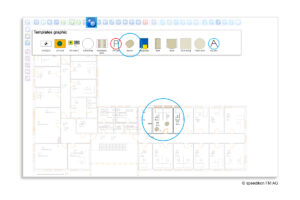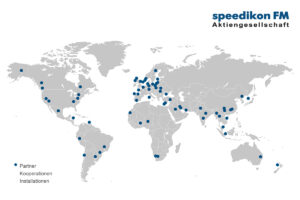Without software, ESG is a real challenge for companies. The reason?
The necessary data is usually scattered across departments. The data has a wide variety of formats and formatting. Some of the necessary data is not collected at all. And much of it cannot be easily correlated or analysed.
However, anyone using CAFM software already has a great tool to fulfil numerous requirements relating to ESG. With its modules and evaluation options, CAFM software is able to control ESG content and processes and display their results on-the-spot and over time.
Modules that can help to monitor and achieve ESG goals are, for example
- Energy management
- maintenance management
- cleaning management
- Workplace management
- Green space management
- Waste disposal management
- Hazardous substance register
And this is just a small excerpt that is already having a major impact.
CAFM and ESG: Environmental
The ‘E’ in ESG stands for Environmental and is often equated with energy.
This is not formally correct, but the energy consumption of a company or organisation clearly has the greatest influence on the environment.
CAFM software can work with energy data. It can collect it by itself or transfer it from third-party systems as data drops, accumulate the values, analyse them and display them graphically in a variety of ways. In some cases, forecasts can also be created and technical building equipment can be controlled directly from the software via interfaces to IoT.
At the same time, CAFM supports the maintenance and servicing of devices and systems, reducing unnecessary work, conserving resources and ensuring that technical equipment is utilised as effectively as possible.
CAFM and ESG: Social
The ‘S’ in ESG stands for Social and addresses the social impact of corporate behaviour on employees ans stakeholders as well as on the environment.
One obvious approach here is to introduce workplace management. This makes it possible to realise flexible working models with variably designed office spaces so that employees can reserve and use the most suitable workplace for their current purposes at any time.
If the workstations are equipped with sensors, a reservation can be automatically cancelled if an employee does not use it within a specified time window.
Sensors for light, temperature and air quality can be used in conjunction with control motors for the corresponding technical installations in the room to control settings for air conditioning, shading and lighting so that employees feel individually comfortable. In some cases, CAFM software can also save the preferences of individual people anonymously and automatically transfer the preferred settings to each selected workstation.
Incidentally, some activities in the area of social also contribute to the area of governance. The example of workplace management, which only uses as much space as is actually needed, has a direct impact on the CO2 footprint through
– Reduced space requirements,
– lower energy consumption,
– reduced journeys to and from work.
This example also highlights the complexity inherent in ESG – and which CAFM software is able to map.
CAFM and ESG: Governance
The ‘G’ in ESG stands for governance, i.e. corporate management. The combination of governance and CAFM as the dream team for ESG is not immediately obvious to everyone. However, CAFM also offers structures and functions for governance that are valuable for ESG endeavours.
We have already talked about the possibilities of using CAFM to reduce the organisation’s carbon footprint.
Another effective tool in the CAFM system are the numerous dashboards that can be used to visualise the various successes relating to governance issues and provide reliable evidence.
Consumption histories or system control data can be used to create forecasts and run simulations that provide a detailed and reliable basis for future decisions.
If a CAFM system is BIM-capable, it can also create forecasts based on a BIM model and, for example, help to determine which building materials and which construction methods will be particularly climate-friendly.
The CAFM application becomes even more powerful with interfaces to third-party systems, as this makes even more data available for a wide range of applications for analyses and enables automated control of these systems.
CAFM and ESG – that’s why they belong together
CAFM software is one of the most versatile and powerful applications in the field of property and asset management. Its variability and the numerous options for customising CAFM software to the individual requirements of users and companies is also essential for supporting ESG requirements. CAFM software is therefore a perfect tool for ESG management.
Picture: user21016237/Freepik.com




